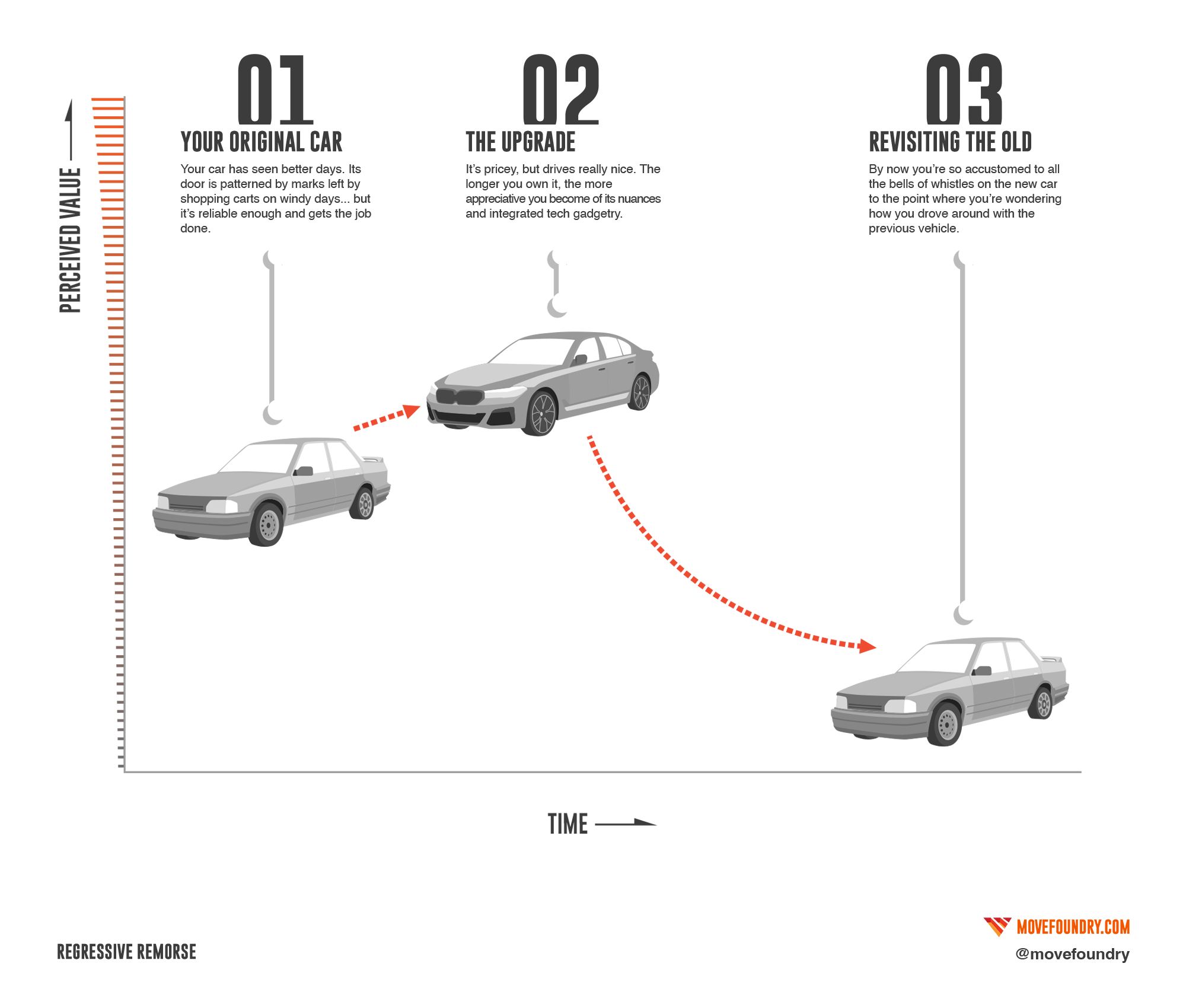REGRESSIVE REMORSE
Navigating the Perception of Value in Upgrades
Have you ever experienced the feeling of disappointment when returning to an older version of a product after using its upgraded counterpart? The disparity between the two can leave you questioning your previous satisfaction. This phenomenon, which we are unofficially terming Regressive Remorse, occurs due to our tendency to adapt to and normalize new experiences over time. In this blog, we'll explore how hedonic adaptation affects our perception of value and discuss strategies for businesses to effectively communicate the benefits of their upgraded products or services.
The Impact of Hedonic Adaptation:
Hedonic adaptation refers to our ability to adjust to new stimuli, resulting in a decrease in the excitement or happiness initially associated with it. This adaptation is responsible for making once-thrilling experiences feel ordinary or even inferior over time. Imagine driving a new car with improved features and performance. As you become accustomed to these enhancements, your previous vehicle suddenly feels outdated and inadequate. This shift in perception is the result of hedonic adaptation in action.
Understanding the Value Discrepancy:
When customers consider an upgrade to a product or service they already possess, they may not perceive the same value discrepancy that the seller does. While the seller has experienced the positive differences firsthand, the customer has yet to test-drive or fully comprehend the benefits of the upgrade. It is crucial for businesses to bridge this gap and effectively communicate the value proposition to potential customers.
Strategies for Earning Customer Buy-In:
Demonstrate the Unique Features: Highlight the distinctive features and improvements of your upgraded product or service. Provide clear and concise information that showcases the advantages and addresses any concerns or limitations of the previous version. Visual aids, demonstrations, and comparisons can help customers understand the value they will gain from the upgrade.
Offer Trial Periods or Samples: Allow customers to experience the upgraded product or service through trial periods, samples, or limited-time offers. This hands-on experience enables them to feel the difference and appreciate the value firsthand, increasing their likelihood of making a purchase.
Leverage Customer Testimonials: Share testimonials and success stories from customers who have already upgraded. Hearing about the positive experiences of others can help potential customers envision the benefits and overcome any hesitation they may have.
Provide Educational Content: Create informative content such as videos, guides, or blog posts that explain the unique features and benefits of the upgrade. By offering valuable insights, you can educate customers and build their confidence in the value of the upgrade.
Personalize the Experience: Understand your customers' needs and preferences to tailor your messaging and offerings accordingly. Offer personalized recommendations based on their current usage and show how the upgrade can address their specific pain points or enhance their overall experience.
Conclusion:
Regressive Remorse is a common experience resulting from hedonic adaptation, causing us to perceive previous versions of products or services as inferior after experiencing an upgrade. For businesses, effectively communicating the value of an upgrade is crucial in overcoming customers' initial resistance. By demonstrating unique features, providing hands-on experiences, leveraging testimonials, offering educational content, and personalizing the experience, businesses can bridge the perception gap and help customers appreciate the true value of an upgrade.
